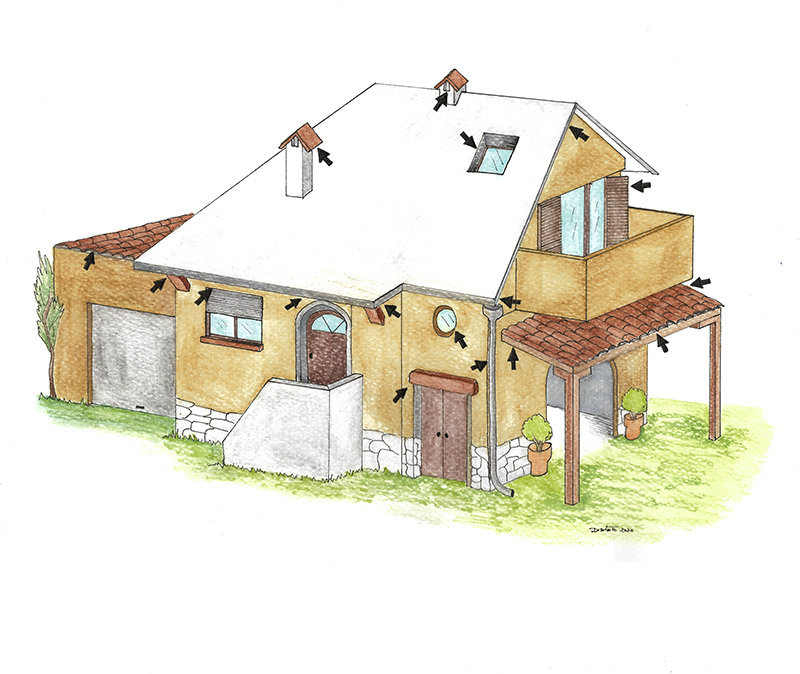The shelters chosen by bats, can be very varied and used differently during the several periods of the year. There are summer shelters, which bats use especially during the day (but also at night to take a break during the intense insect hunting!), and winter shelters, used in the cold season when they fall into hibernation.
If we wanted to classify them according to the type of shelter most used during the year, we could divide them in: phytophilous (those that use trees), anthropophilic (those that use buildings), troglophilic (those that use caves and cavities). As it always happens, in nature there are no fixed rules, so there are many species that use different types of shelters during the year.
The phytophilous species
They find protection in the old trees rich in cracks and cavities: a few centimetres raised bark, is enough to offer them a warm shelter! These bats need therefore woods with many old trees, full of cavities and cracks that unfortunately are ever more difficult to find. In addition, a forest with old trees will also be an environment rich of biodiversity that will offer bats plenty of insects.
The troglophilic species
They find refuge in caves and cavities, both natural and artificial (like a tunnel!). There are caves, that are used during the summer and others in winter, while some, large and with heterogeneous characteristics inside, can be suitable throughout the year. In caves and cavities, bats can find shelter in crevices or simply hang from the ceiling.
The anthropophilic species
These species (from the Greek anthropos -man- and philos -affinity-) are accustomed to the man and find shelter in our homes: the basements, the garrets, the roofs, the cracks between the tiles, the gutters, the shutter boxes, the beams, the cracks of the stones and bricks, the plaster; in other words, all the available solutions related to our homes are perfect, as long as they ensure silence and quiet.
Just because our modern homes are often unable to provide protection to the species of bats linked to buildings, a good substitute is represented by the bat boxes. These are artificial shelters built of different materials (wood, cement, cement and sawdust...), with the purpose of providing a suitable home to our friend bats, if ours is devoid of cracks, cavities and other small holes.
